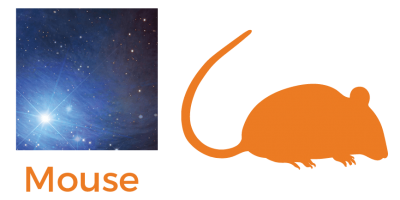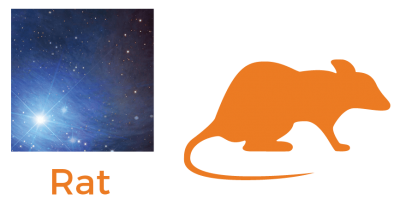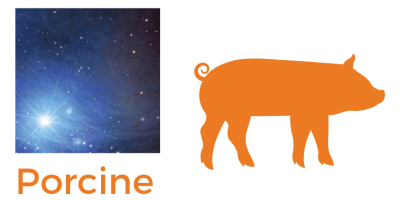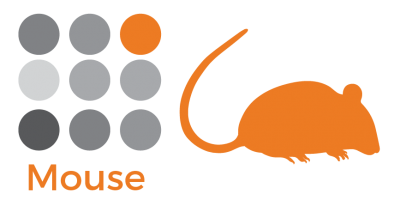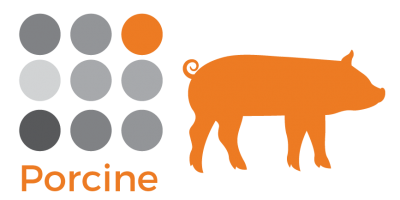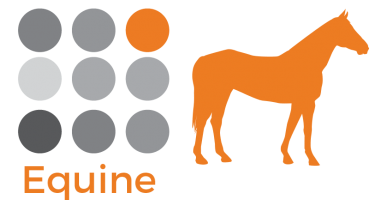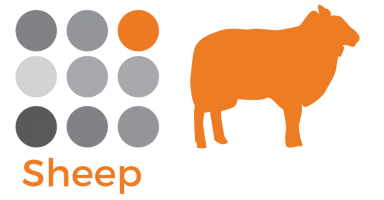Sample Preparation Guide
Serum or Plasma?
There is no optimal sample type that is clearly superior for the measurement of all analytes measured in a single assay and in general serum and plasma can be run on most assays with a few possible exceptions (see below). The most important factor in any study is to be consistent in sample container selection to avoid introducing avoidable and unnecessary variables in to the data analysis.
Consultation with experts in the field and considering previous literature related to the specific cytokines being studied can provide valuable insights into the best sample type for a particular research question.
Plasma is more representative of circulating biomarkers, and in serum a number of factors are released in the clotting process (for example, platelet derived growth factors, amongst others). For platelet activation we have identified the following co-expressing cytokines (non-biased clustering of >150 clinical plasma-EDTA samples): EGF, ENA-78, GROα, PDGF AA, AB, BB, RANTES, CCL5, sCD40L, TARC, VEGF-A. Levels of the biomarkers in this group are significantly higher in serum samples than in plasma samples drawn from the same subjects.
Different anticoagulants used in the preparation of plasma samples will also affect the measurement of some cytokines. Using EDTA as an anticoagulant is recommended for most assays. EDTA in plasma collection might also provide additional protection from protease activity (EDTA is a metal ion chelator and ensures greater inhibition of metalloproteases).
Plasma heparin should be avoided if possible as it can cause a test interference in Luminex assay performance. Heparin has been found to be contaminated with endotoxin, which can stimulate white blood cells to release cytokines. If heparin must be used it is recommended not to exceed 10 IU/mL of sample, although the heparin content of commercially available specimen collection containers is likely to exceed this recommendation. In our experience the largest impact of heparin is that it can cause bead agglutination, resulting in a lower bead count as the beads aggregate together and cannot be individually detected by the dual laser flow-cytometry system. Bead agglutination has a detrimental impact on bead count for all analytes in the assay. Many clients do run with plasma heparin without issue, so this effect is not always evident indicating that other sample matrix effects are at play in assay performance.
Note that specific sample requirements are necessary for the detection of certain analytes, including:
• Plasma should be collected for optimal detection of D-Dimer in its physiological state (in vivo), in addition to other breakdown products of clot formation such as Fibrinogen. Testing on serum risks detecting D-Dimer formed in vitro in the sample collection tube (on breakdown of clot formation).
• Platelet-free plasma should be collected for the measurement of circulating TGFβ1 in our TGFβ 3-Plex Discovery Assay® Multi Species Array (TGFB1-3), in addition to assays which detect circulating levels of BDNF, Angiopoietin-1, PDGF-AA, PDGF-BB, and some MMPs (for example MMP-9 in our Human MMP and TIMP Discovery Assay® Array (HMMP/TIMP-S,P)). These analytes are present in platelet granules and are released upon platelet activation. Many plasma preparation procedures, including those recommended by the Clinical Laboratory and Standards Institute (CLSI), result in incomplete platelet removal from blood. This will cause variable and irreproducible results for assays of factors contained in platelets and released by platelet activation.
• Plasma and platelet-poor plasma samples are not suitable to measure circulating MMP-13 in our Human MMP and TIMP Discovery Assay® Array (HMMP/TIMP-S,P). EDTA and Citrate are also not recommended for use in this assay due to their chelating properties.
General Guidelines
All samples must be centrifuged prior to aliquoting in a refrigerated centrifuge at 4°C. Centrifuging at 4°C is recommended as the energy within a spinning centrifuge causes the temperature within the centrifuge to increase and affect the stability of certain analytes.
The aliquot should be drawn from the middle of the sample volume.
It is best to provide samples which are as clean as possible to limit the potential for test interferences caused by particulate matter. If required, centrifugation can be repeated 2 or 3 times to completely clarify the supernatants.
To avoid non-specific binding issues, ensure samples are collected in pyrogen/endotoxin-free polypropylene tubes. Do not store samples in glass!
Aliquot and label samples in accordance with our Conforming Tubes and Sample Labeling Instructions. Proper labeling and documentation of samples are essential for accurate tracking and interpretation of results.
Store samples at ≤-20°C if storing for ~1 month, or ≤-70°C for longer term storage.
Avoid multiple freeze/thaw cycles (>2 cycles).
If your sample type is not listed, please contact us for assistance.
Serum
- Collect blood samples and allow to clot at room temperature for 30 minutes to 1 hour.
- Centrifuge clotted blood at 1000 x g for 10 min at 4°C.
- Aliquot serum immediately into a pyrogen/endotoxin-free polypropylene tube (conforming tubes are 0.5-0.65mL snap cap). The aliquot should be drawn from the middle of the sample volume. Avoid transferring any cellular debris or red blood cells.
- If you want your samples run at a dilution, prepare your aliquot accordingly (refer to our “Sample Dilution Guide”).
- Avoid using hemolyzed or lipemic sera.
INHIBITORS are required for Serum/Plasma in the following assays (refer to the Inhibitors section below).
• Mouse/Rat Metabolic Hormone (MRDMET12)
• Human Metabolic Hormone (HDMET12)
• Custom Metabolic Hormone Panels
Inhibitors (serum/plasma)
If assaying for GLP-1, Amylin, Glucagon, and/or Active Ghrelin in any species, then the following should be added at the time of collection:
• DPPIV inhibitor (for GLP-1 measurement)
• Protease Inhibitor cocktail (for Amylin measurement)
• Aprotinin (for Glucagon measurement)
• Serine protease inhibitor (for Ghrelin measurement)
We recommend following manufacturer’s instructions for use, so DPPIV from Millipore (cat # DPP4-010) at a final concentration of 50 uM, and 1X concentration (e.g., 10 ul of 100X stock in 1 mL of blood) of the Sigma protease inhibitor cocktail (cat # P2714). This inhibitor cocktail contains aprotinin and a serine protease inhibitor for ghrelin, so only DPPIV and the inhibitor cocktail are needed for the Discovery Assay.
We have limited data that shows that ghrelin signal decreases substantially within 10-15 minutes from sample collection to plasma separation if the protease inhibitors are not added. With this in mind, make sure that you add the inhibitor immediately to whole blood on collection, before separation of the serum/plasma, and that the sample collection tubes are inverted several times to mix thoroughly once the inhibitors are added. Serum and plasma are both valid for this assay as far as we know, but EDTA in plasma collection might provide additional protection from protease activity.
General Guidelines
All samples must be centrifuged prior to aliquoting in a refrigerated centrifuge at 4°C. Centrifuging at 4°C is recommended as the energy within a spinning centrifuge causes the temperature within the centrifuge to increase and affect the stability of certain analytes.
The aliquot should be drawn from the middle of the sample volume.
It is best to provide samples which are as clean as possible to limit the potential for test interferences caused by particulate matter. If required, centrifugation can be repeated 2 or 3 times to completely clarify the supernatants.
To avoid non-specific binding issues, ensure samples are collected in pyrogen/endotoxin-free polypropylene tubes. Do not store samples in glass!
Aliquot and label samples in accordance with our Conforming Tubes and Sample Labeling Instructions. Proper labeling and documentation of samples are essential for accurate tracking and interpretation of results.
Store samples at ≤-20°C if storing for ~1 month, or ≤-70°C for longer term storage.
Avoid multiple freeze/thaw cycles (>2 cycles).
If your sample type is not listed, please contact us for assistance.
Plasma
- Collect blood samples into the appropriate anticoagulant treated tubes.
- Centrifuge at 1000 x g for 10 min at 4°C within 30 minutes of blood collection. Repeat centrifuging if necessary to separate the plasma from the cellular components.
- Aliquot plasma immediately into a pyrogen/endotoxin-free polypropylene tube (conforming tubes are 0.5-0.65mL snap cap). The aliquot should be drawn from the middle of the sample volume. Avoid transferring any cellular debris or red blood cells.
- If you want your samples run at a dilution, prepare your aliquot accordingly (refer to our “Sample Dilution Guide”).
- Avoid using hemolyzed or lipemic plasma.
INHIBITORS are required for Serum/Plasma in the following assays (refer to the Inhibitors section below).
• Mouse/Rat Metabolic Hormone (MRDMET12)
• Human Metabolic Hormone (HDMET12)
• Custom Metabolic Hormone Panels
Inhibitors
If assaying for GLP-1, Amylin, Glucagon, and/or Active Ghrelin in any species, then the following should be added at the time of collection:
• DPPIV inhibitor (for GLP-1 measurement)
• Protease Inhibitor cocktail (for Amylin measurement)
• Aprotinin (for Glucagon measurement)
• Serine protease inhibitor (for Ghrelin measurement)
We recommend following manufacturer’s instructions for use, so DPPIV from Millipore (cat # DPP4-010) at a final concentration of 50 uM, and 1X concentration (e.g., 10 ul of 100X stock in 1 mL of blood) of the Sigma protease inhibitor cocktail (cat # P2714). This inhibitor cocktail contains aprotinin and a serine protease inhibitor for ghrelin, so only DPPIV and the inhibitor cocktail are needed for the Discovery Assay.
We have limited data that shows that ghrelin signal decreases substantially within 10-15 minutes from sample collection to plasma separation if the protease inhibitors are not added. With this in mind, make sure that you add the inhibitor immediately to whole blood on collection, before separation of the serum/plasma, and that the sample collection tubes are inverted several times to mix thoroughly once the inhibitors are added. Serum and plasma are both valid for this assay as far as we know, but EDTA in plasma collection might provide additional protection from protease activity.
General Guidelines
All samples must be centrifuged prior to aliquoting in a refrigerated centrifuge at 4°C. Centrifuging at 4°C is recommended as the energy within a spinning centrifuge causes the temperature within the centrifuge to increase and affect the stability of certain analytes.
The aliquot should be drawn from the middle of the sample volume.
It is best to provide samples which are as clean as possible to limit the potential for test interferences caused by particulate matter. If required, centrifugation can be repeated 2 or 3 times to completely clarify the supernatants.
To avoid non-specific binding issues, ensure samples are collected in pyrogen/endotoxin-free polypropylene tubes. Do not store samples in glass!
Aliquot and label samples in accordance with our Conforming Tubes and Sample Labeling Instructions. Proper labeling and documentation of samples are essential for accurate tracking and interpretation of results.
Store samples at ≤-20°C if storing for ~1 month, or ≤-70°C for longer term storage.
Avoid multiple freeze/thaw cycles (>2 cycles).
If your sample type is not listed, please contact us for assistance.
Tissue Homogenate
Luminex assays detect extracellular proteins in solution, therefore tissues must be submitted as tissue homogenate.
We recommend that you homogenize your samples whilst they are still fresh, but if unavoidable, then sample preparation on ice would be encouraged. Ideally, for any sample it is better to minimize protein degradation by avoiding multiple freeze/thaw cycles.
With the high variation of proteins expressed in different tissues, along with the variation in extraction methods, Eve Technologies recommends running a pilot assay for this sample type.
- Homogenize tissue in PBS or equivalent buffer containing protease inhibitors (like aprotinin or an inhibitor cocktail) and low (≤ 0.5%) non-ionic detergent concentration. Avoid using SDS or other denaturing agents. If SDS is required, do not exceed 0.1%.
- Example buffer: 20 mM Tris HCl (pH 7.5), 0.5% Tween 20, 150 mM NaCl, Sigma protease inhibitors 1:100. RIPA buffer is also a commonly used homogenate buffer for our assays.
- Centrifuge the homogenate at a low speed (around 1000-2000 x g) for 10-15 minutes at 4°C. This will separate the insoluble debris from the soluble fraction (supernatant).
- Transfer the supernatant to a clean pyrogen/endotoxin-free polypropylene tube, taking care not to disturb the pellet.
- Measure the protein concentration in the supernatant using a protein assay kit (e.g., BCA or Bradford assay).
- Normalize the samples based on total protein by adding buffer to higher total protein samples.
- Prepare aliquots and store at ≤-20°C.
For your total protein concentration, the minimum recommended is 400 ug/mL for Luminex assay performance and the optimal total protein concentration is 2 to 5 mg/mL. Total protein concentrations greater than 5 mg/mL are not recommended as not all proteins will be solubilized equally by the lysis buffer. In particular, for our Discovery TGFB assay, higher protein concentrations can present a problem with the pre-analytical acid extraction step causing sample precipitates, resulting in high bead aggregation and poor bead acquisition.
Alternatively, you can normalize after assay performance by dividing analyte concentration by the total protein concentration and expressing analyte concentration as pg/mg of protein instead of pg/mL. This approach is not recommended however as the effects of a dilution are not linear, due to a sigmoidal standard curve and matrix effects associated with a dilution.
If you require BCA total protein concentration analysis then Eve Technologies can perform this for you for a fee.
Considerations
Preparation of tissue homogenate is certainly the most potentially problematic, as by definition this sample type is less homogenous (compared to biological fluids for example) and therefore has higher sources of variability. Ultimately it is best to supply samples which are as ‘clean’ as possible as the presence of particulate matter in a sample has the potential to present a test interference in Luminex assay performance, resulting in bead aggregation and lower bead counts.
For brain homogenates and related homogenates, the high presence of lipids and receptors can present an additional potential test interference with lipoproteins interfering with antigen-antibody reaction by blocking binding sites on antibodies. With this in mind, please ensure that after centrifugation aliquots are drawn from the middle of the sample volume. If required, centrifugation can be repeated 2 or 3 times to completely clarify the supernatants.
Alternatively, you can add a polar solvent to your buffer. If using a polar solvent then you might want to consider using DMSO (up to 10%). If using a different solvent then please check in with Eve Technologies as other solvents might be incompatible with Luminex assay performance (affecting the classification dyes in the microspheres, causing leaching of dye from the beads and making sample analyte levels undetectable).
General Guidelines
All samples must be centrifuged prior to aliquoting in a refrigerated centrifuge at 4°C. Centrifuging at 4°C is recommended as the energy within a spinning centrifuge causes the temperature within the centrifuge to increase and affect the stability of certain analytes.
The aliquot should be drawn from the middle of the sample volume.
It is best to provide samples which are as clean as possible to limit the potential for test interferences caused by particulate matter. If required, centrifugation can be repeated 2 or 3 times to completely clarify the supernatants.
To avoid non-specific binding issues, ensure samples are collected in pyrogen/endotoxin-free polypropylene tubes. Do not store samples in glass!
Aliquot and label samples in accordance with our Conforming Tubes and Sample Labeling Instructions. Proper labeling and documentation of samples are essential for accurate tracking and interpretation of results.
Store samples at ≤-20°C if storing for ~1 month, or ≤-70°C for longer term storage.
Avoid multiple freeze/thaw cycles (>2 cycles).
If your sample type is not listed, please contact us for assistance.
Tissue Culture/Cell Culture Supernatant
- Centrifuge samples at 3000 x g at 4° C prior to aliquoting to remove debris. Repeat centrifugation until debris is removed from the supernatant (i.e. the sample is as “clean” as possible).
- If you wish to dilute your samples, prepare your aliquot accordingly.
- Aliquot supernatant into a pyrogen/endotoxin-free polypropylene tube (conforming tubes are 0.5-0.65mL snap cap).
General Guidelines
All samples must be centrifuged prior to aliquoting in a refrigerated centrifuge at 4°C. Centrifuging at 4°C is recommended as the energy within a spinning centrifuge causes the temperature within the centrifuge to increase and affect the stability of certain analytes.
The aliquot should be drawn from the middle of the sample volume.
It is best to provide samples which are as clean as possible to limit the potential for test interferences caused by particulate matter. If required, centrifugation can be repeated 2 or 3 times to completely clarify the supernatants.
To avoid non-specific binding issues, ensure samples are collected in pyrogen/endotoxin-free polypropylene tubes. Do not store samples in glass!
Aliquot and label samples in accordance with our Conforming Tubes and Sample Labeling Instructions. Proper labeling and documentation of samples are essential for accurate tracking and interpretation of results.
Store samples at ≤-20°C if storing for ~1 month, or ≤-70°C for longer term storage.
Avoid multiple freeze/thaw cycles (>2 cycles).
If your sample type is not listed, please contact us for assistance.
Cell Lysate
Eve Technologies recommends running a pilot assay for this sample type.
In the event that you decide to perform protein normalization then we recommend that you normalize samples prior to sending to us to contain an equal amount of total protein. For your total protein concentration, the minimum recommended is 400ug/mL for Luminex assay performance and the optimal total protein concentration is 2 to 5 mg/mL. Total protein concentrations greater than 5 mg/mL are not recommended as not all proteins will be solubilized equally by the lysis buffer. In particular, for our Discovery TGFB assays, higher protein concentrations can present a problem with the pre-analytical acid extraction step causing sample precipitates, resulting in high bead aggregation and poor bead acquisition.
Alternatively, you can normalize after assay performance by dividing analyte concentration by the total protein concentration and expressing analyte concentration as pg/mg of protein instead of pg/mL. This approach is not recommended however as the effects of a dilution are not linear, due to a sigmoidal standard curve and matrix effects associated with a dilution.
Absolute cell number will vary depending on the type of cells being used and their treatment.
Preparation of cell lysate can be potentially problematic, as by definition this sample type is less homogenous (compared to biological fluids for example) and therefore has higher sources of variability. Ultimately it is best to supply samples which are as ‘clean’ as possible as the presence of particulate matter in a sample has the potential to present a test interference in Luminex assay performance, resulting in bead aggregation and lower bead counts.
Cell Lysis Preparation:
Use a PBS-based buffer containing protease inhibitors. We recommend using the Sigma Aldrich Protease Inhibitor Cocktail (P2714).
Use non-ionic detergents, such as NP40, in experimental design.
Avoid using SDS or other denaturing agents. If SDS is required, do not use more than 0.1%. Avoid any organic solvents like DMSO*.
Example buffers:
Tris-HCl: 50 mM, NaCl: 150 mM, 0.5% NP-40, EDTA: 1 mM, Aprotinin: 1mg/ml, pH 7.4.
RIPA is a commonly used buffer in Luminex assay performance
Ultimately, for cell/tissue homogenates, the final cell or tissue homogenate should be prepared in a buffer that has a neutral pH, contains minimal detergents or strongly denaturing agents and has an ionic strength close to physiological concentrations.
*DMSO is a commonly used polar aprotic solvent. Although DMSO is not recommended by our preferred kit supplier, they see no negative effect up to 10% DMSO. If using DMSO, and if you anticipate levels to exceed this, consider a more rigorous washing before the lysis step.
We recommend including a media control in your sample submission, to understand any background baseline signal associated with your media.
Non-adherent cells:
- Pellet cells by low-speed centrifugation (500 x g) for 5 minutes.
- Remove medium from the pellet, and wash twice with ice cold PBS.
- Remove the PBS, and resuspend the cell pellet in cell lysis buffer (recommended cell lysate concentration is 2–5 mg/ml). Incubate 15 minutes on ice with occasional vortexing.
- Transfer the lysate to a microcentrifuge tube and centrifuge at 10,000 x g for 10 minutes at 2–8°C to remove particulate matter.
- Aliquot the cleared lysate into clean microcentrifuge tubes and determine total protein concentration.
Adherent cells:
- Remove tissue culture medium from the cells, and wash cells twice with ice cold PBS.
- Remove the PBS, add cell lysis buffer (recommended cell lysate concentration is 2 to 5 mg/ml), and incubate 15 minutes on ice.
- Collect the cell lysate and transfer to a microcentrifuge tube. Centrifuge at 10,000 x g for 10 minutes at 2–8°C to remove particulate matter.
- Aliquot the cleared lysate into clean microcentrifuge tubes and determine total protein concentration.
Lysates should be frozen and stored/shipped at –80°C. Avoid multiple freeze-thaw cycles of frozen samples.
General Guidelines
All samples must be centrifuged prior to aliquoting in a refrigerated centrifuge at 4°C. Centrifuging at 4°C is recommended as the energy within a spinning centrifuge causes the temperature within the centrifuge to increase and affect the stability of certain analytes.
The aliquot should be drawn from the middle of the sample volume.
It is best to provide samples which are as clean as possible to limit the potential for test interferences caused by particulate matter. If required, centrifugation can be repeated 2 or 3 times to completely clarify the supernatants.
To avoid non-specific binding issues, ensure samples are collected in pyrogen/endotoxin-free polypropylene tubes. Do not store samples in glass!
Aliquot and label samples in accordance with our Conforming Tubes and Sample Labeling Instructions. Proper labeling and documentation of samples are essential for accurate tracking and interpretation of results.
Store samples at ≤-20°C if storing for ~1 month, or ≤-70°C for longer term storage.
Avoid multiple freeze/thaw cycles (>2 cycles).
If your sample type is not listed, please contact us for assistance.
CSF
- Keep collected CSF samples as cold as possible to maintain their integrity during processing..
- Centrifuge the sample at a low speed, around 1000-2000 x g for 10-15 min at 4° C prior to aliquoting to remove debris.
- Prepare aliquots in pyrogen/endotoxin-free polypropylene tubes and store at ≤-20°C.
General Guidelines
All samples must be centrifuged prior to aliquoting in a refrigerated centrifuge at 4°C. Centrifuging at 4°C is recommended as the energy within a spinning centrifuge causes the temperature within the centrifuge to increase and affect the stability of certain analytes.
The aliquot should be drawn from the middle of the sample volume.
It is best to provide samples which are as clean as possible to limit the potential for test interferences caused by particulate matter. If required, centrifugation can be repeated 2 or 3 times to completely clarify the supernatants.
To avoid non-specific binding issues, ensure samples are collected in pyrogen/endotoxin-free polypropylene tubes. Do not store samples in glass!
Aliquot and label samples in accordance with our Conforming Tubes and Sample Labeling Instructions. Proper labeling and documentation of samples are essential for accurate tracking and interpretation of results.
Store samples at ≤-20°C if storing for ~1 month, or ≤-70°C for longer term storage.
Avoid multiple freeze/thaw cycles (>2 cycles).
If your sample type is not listed, please contact us for assistance.
Bronchoalveolar Lavage (BAL) Fluid
For samples which contain a lot of mucus, you may wish to consider a mucolyse pre-treatment. Please contact Eve Technologies for more information.
- Keep the collected BAL fluid samples as cold as possible to maintain their integrity during processing.
- Centrifuge samples at a low speed, around 1000-2000 x g for 10-15 min at 4° C prior to aliquoting to remove debris.
- Prepare aliquots in pyrogen/endotoxin-free polypropylene tubes and store at ≤-20°C.
General Guidelines
All samples must be centrifuged prior to aliquoting in a refrigerated centrifuge at 4°C. Centrifuging at 4°C is recommended as the energy within a spinning centrifuge causes the temperature within the centrifuge to increase and affect the stability of certain analytes.
The aliquot should be drawn from the middle of the sample volume.
It is best to provide samples which are as clean as possible to limit the potential for test interferences caused by particulate matter. If required, centrifugation can be repeated 2 or 3 times to completely clarify the supernatants.
To avoid non-specific binding issues, ensure samples are collected in pyrogen/endotoxin-free polypropylene tubes. Do not store samples in glass!
Aliquot and label samples in accordance with our Conforming Tubes and Sample Labeling Instructions. Proper labeling and documentation of samples are essential for accurate tracking and interpretation of results.
Store samples at ≤-20°C if storing for ~1 month, or ≤-70°C for longer term storage.
Avoid multiple freeze/thaw cycles (>2 cycles).
If your sample type is not listed, please contact us for assistance.
Synovial Fluid
For samples which are highly viscous, you may wish to consider a hyaluronidase pre-treatment. Please contact Eve Technologies for more information.
- Keep the collected synovial fluid samples as cold as possible to maintain their integrity during processing.
- Centrifuge samples at a low speed, around 1000-2000 x g for 10-15 min at 4° C prior to aliquoting to remove debris.
- Prepare aliquots in pyrogen/endotoxin-free polypropylene tubes and store at ≤-20°C.
General Guidelines
All samples must be centrifuged prior to aliquoting in a refrigerated centrifuge at 4°C. Centrifuging at 4°C is recommended as the energy within a spinning centrifuge causes the temperature within the centrifuge to increase and affect the stability of certain analytes.
The aliquot should be drawn from the middle of the sample volume.
It is best to provide samples which are as clean as possible to limit the potential for test interferences caused by particulate matter. If required, centrifugation can be repeated 2 or 3 times to completely clarify the supernatants.
To avoid non-specific binding issues, ensure samples are collected in pyrogen/endotoxin-free polypropylene tubes. Do not store samples in glass!
Aliquot and label samples in accordance with our Conforming Tubes and Sample Labeling Instructions. Proper labeling and documentation of samples are essential for accurate tracking and interpretation of results.
Store samples at ≤-20°C if storing for ~1 month, or ≤-70°C for longer term storage.
Avoid multiple freeze/thaw cycles (>2 cycles).
If your sample type is not listed, please contact us for assistance.
Sputum
For samples which contain a lot of mucus, you may wish to consider a mucolyse pre-treatment. Please contact Eve Technologies for more information.
- Keep the collected sputum samples as cold as possible to maintain their integrity during processing.
- Centrifuge samples at a low speed, around 1000-2000 x g for 10-15 min at 4° C prior to aliquoting to remove debris.
- Prepare aliquots in pyrogen/endotoxin-free polypropylene tubes and store at ≤-20°C.
General Guidelines
All samples must be centrifuged prior to aliquoting in a refrigerated centrifuge at 4°C. Centrifuging at 4°C is recommended as the energy within a spinning centrifuge causes the temperature within the centrifuge to increase and affect the stability of certain analytes.
The aliquot should be drawn from the middle of the sample volume.
It is best to provide samples which are as clean as possible to limit the potential for test interferences caused by particulate matter. If required, centrifugation can be repeated 2 or 3 times to completely clarify the supernatants.
To avoid non-specific binding issues, ensure samples are collected in pyrogen/endotoxin-free polypropylene tubes. Do not store samples in glass!
Aliquot and label samples in accordance with our Conforming Tubes and Sample Labeling Instructions. Proper labeling and documentation of samples are essential for accurate tracking and interpretation of results.
Store samples at ≤-20°C if storing for ~1 month, or ≤-70°C for longer term storage.
Avoid multiple freeze/thaw cycles (>2 cycles).
If your sample type is not listed, please contact us for assistance.
Saliva
For samples which contain a lot of mucus, you may wish to consider a mucolyse pre-treatment. Please contact Eve Technologies for more information.
- Keep the collected saliva samples as cold as possible to maintain their integrity during processing.
- Centrifuge samples at a low speed, around 1000-2000 x g for 10-15 min at 4° C prior to aliquoting to remove debris.
- Prepare aliquots in pyrogen/endotoxin-free polypropylene tubes and store at ≤-20°C.
General Guidelines
All samples must be centrifuged prior to aliquoting in a refrigerated centrifuge at 4°C. Centrifuging at 4°C is recommended as the energy within a spinning centrifuge causes the temperature within the centrifuge to increase and affect the stability of certain analytes.
The aliquot should be drawn from the middle of the sample volume.
It is best to provide samples which are as clean as possible to limit the potential for test interferences caused by particulate matter. If required, centrifugation can be repeated 2 or 3 times to completely clarify the supernatants.
To avoid non-specific binding issues, ensure samples are collected in pyrogen/endotoxin-free polypropylene tubes. Do not store samples in glass!
Aliquot and label samples in accordance with our Conforming Tubes and Sample Labeling Instructions. Proper labeling and documentation of samples are essential for accurate tracking and interpretation of results.
Store samples at ≤-20°C if storing for ~1 month, or ≤-70°C for longer term storage.
Avoid multiple freeze/thaw cycles (>2 cycles).
If your sample type is not listed, please contact us for assistance.
Nasopharyngeal Aspirate
For samples which are highly viscous, you may wish to consider a hyaluronidase pre-treatment. Please contact Eve Technologies for more information.
- Keep the collected samples as cold as possible to maintain their integrity during processing.
- Centrifuge samples at a low speed, around 1000-2000 x g for 10-15 min at 4° C prior to aliquoting to remove debris.
- Prepare aliquots in pyrogen/endotoxin-free polypropylene tubes and store at ≤-20°C.
General Guidelines
All samples must be centrifuged prior to aliquoting in a refrigerated centrifuge at 4°C. Centrifuging at 4°C is recommended as the energy within a spinning centrifuge causes the temperature within the centrifuge to increase and affect the stability of certain analytes.
The aliquot should be drawn from the middle of the sample volume.
It is best to provide samples which are as clean as possible to limit the potential for test interferences caused by particulate matter. If required, centrifugation can be repeated 2 or 3 times to completely clarify the supernatants.
To avoid non-specific binding issues, ensure samples are collected in pyrogen/endotoxin-free polypropylene tubes. Do not store samples in glass!
Aliquot and label samples in accordance with our Conforming Tubes and Sample Labeling Instructions. Proper labeling and documentation of samples are essential for accurate tracking and interpretation of results.
Store samples at ≤-20°C if storing for ~1 month, or ≤-70°C for longer term storage.
Avoid multiple freeze/thaw cycles (>2 cycles).
If your sample type is not listed, please contact us for assistance.
Urine
- Collect urine sample: measurement of analytes in urine requires a mid-stream or clean catch urine sample.
- Centrifuge samples at a low speed, around 1000-2000 x g for 10-15 min at 4° C prior to aliquoting to remove debris.
- Prepare aliquots in pyrogen/endotoxin-free polypropylene tubes and store at ≤-20°C.
General Guidelines
All samples must be centrifuged prior to aliquoting in a refrigerated centrifuge at 4°C. Centrifuging at 4°C is recommended as the energy within a spinning centrifuge causes the temperature within the centrifuge to increase and affect the stability of certain analytes.
The aliquot should be drawn from the middle of the sample volume.
It is best to provide samples which are as clean as possible to limit the potential for test interferences caused by particulate matter. If required, centrifugation can be repeated 2 or 3 times to completely clarify the supernatants.
To avoid non-specific binding issues, ensure samples are collected in pyrogen/endotoxin-free polypropylene tubes. Do not store samples in glass!
Aliquot and label samples in accordance with our Conforming Tubes and Sample Labeling Instructions. Proper labeling and documentation of samples are essential for accurate tracking and interpretation of results.
Store samples at ≤-20°C if storing for ~1 month, or ≤-70°C for longer term storage.
Avoid multiple freeze/thaw cycles (>2 cycles).
If your sample type is not listed, please contact us for assistance.
Feces
Preparation of feces samples can be potentially problematic, as by definition this sample type is less homogenous, contains a high amount of particulate matter and therefore has higher sources of variability. Ultimately it is best to supply samples which are as clean as possible as the presence of particulate matter in a sample has the potential to present a test interference in Luminex assay performance, resulting in bead aggregation and lower bead counts.
- Centrifuge samples at a low speed, around 1000-2000 x g for 10-15 min at 4° C prior to aliquoting to remove debris.
- Prepare aliquots in pyrogen/endotoxin-free polypropylene tubes and store at ≤-20°C.
General Guidelines
All samples must be centrifuged prior to aliquoting in a refrigerated centrifuge at 4°C. Centrifuging at 4°C is recommended as the energy within a spinning centrifuge causes the temperature within the centrifuge to increase and affect the stability of certain analytes.
The aliquot should be drawn from the middle of the sample volume.
It is best to provide samples which are as clean as possible to limit the potential for test interferences caused by particulate matter. If required, centrifugation can be repeated 2 or 3 times to completely clarify the supernatants.
To avoid non-specific binding issues, ensure samples are collected in pyrogen/endotoxin-free polypropylene tubes. Do not store samples in glass!
Aliquot and label samples in accordance with our Conforming Tubes and Sample Labeling Instructions. Proper labeling and documentation of samples are essential for accurate tracking and interpretation of results.
Store samples at ≤-20°C if storing for ~1 month, or ≤-70°C for longer term storage.
Avoid multiple freeze/thaw cycles (>2 cycles).
If your sample type is not listed, please contact us for assistance.
Milk
- Centrifuge samples at a low speed, around 1000-2000 x g for 10-15 min at 4° C prior to aliquoting to remove debris.
- Collect the aqueous fraction and repeat this process a total of 3 times.
- Prepare aliquots in pyrogen/endotoxin-free polypropylene tubes and store at ≤-20°C.
Other sample types
If your sample type is not listed, please contact us for assistance. Eve Technologies runs on commercially available assays which may not be optimized for all sample types and study designs, and for unusual sample types, specific sample preparation information may not be readily available. We recognize that biomarker levels will largely be dependent on experimental conditions, specific assay conditions, the type of Luminex analysis being performed, and the sensitivity of the detection method used. Searching through Google Scholar may be a useful resource in finding specific and unique sample preparation details, as Eve Technologies has been cited in thousands of articles.
Regardless of sample type, please refer to our General Guidelines below for important information:
All samples must be centrifuged prior to aliquoting in a refrigerated centrifuge at 4°C. Centrifuging at 4°C is recommended as the energy within a spinning centrifuge causes the temperature within the centrifuge to increase and affect the stability of certain analytes.
The aliquot should be drawn from the middle of the sample volume.
It is best to provide samples which are as clean as possible to limit the potential for test interferences caused by particulate matter. If required, centrifugation can be repeated 2 or 3 times to completely clarify the supernatants.
To avoid non-specific binding issues, ensure samples are collected in pyrogen/endotoxin-free polypropylene tubes. Do not store samples in glass!
Aliquot and label samples in accordance with our Conforming Tubes and Sample Labeling Instructions. Proper labeling and documentation of samples are essential for accurate tracking and interpretation of results.
Store samples at ≤-20°C if storing for ~1 month, or ≤-70°C for longer term storage.
Avoid multiple freeze/thaw cycles (>2 cycles).



